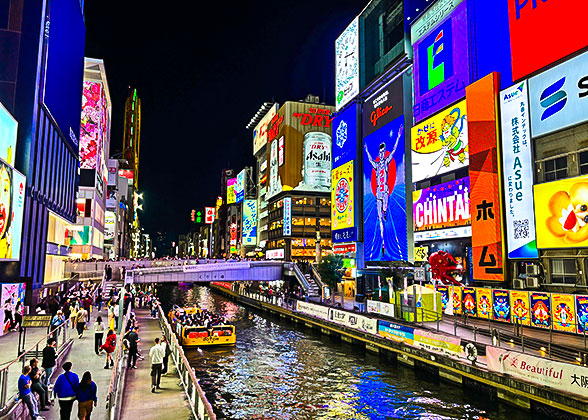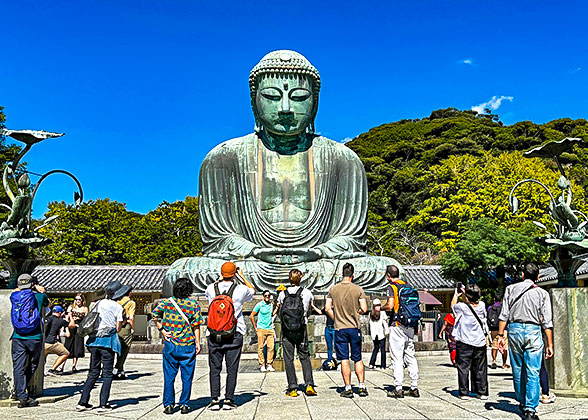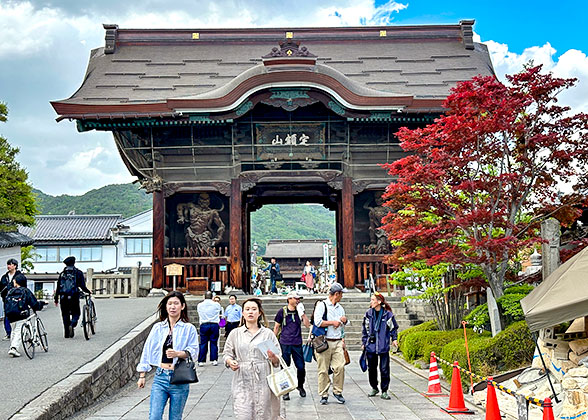- Nagoya Castle
- Atsuta Jingu Shrine
- Osu Kannon
- Toyota Commemorative Museum
- SCMAGLEV and Railway Park
Atsuta Jingu Shrine
Having a history of more than 1,900 years, Atsuta Jingu Shrine is one of the oldest and most prestigious Shinto Shrines in Japan, only secondary to the Ise Grand Shrine in Ise. It is the religious center of Nagoya.It is said that this shrine was built by the wife of Yamatotakeru-no-Mikoto, the legendary 12th emperor of Japan. It is famous for being home to a sacred sword Kusanagi-no-tsurugi, one of the Three Imperial Regalia of Japan.
The major attractions of Atsuta Jingu Shrine include a museum named Bunkaden Treasure House, Shimizusha whose water has the beauty effect, the main shrine Hongu enshrining the Japanese Sun Goddess Amaterasu-Oomikami and four other gods, and the only vermilion temple Minamishingusha.
Atsuta Jingu Shrine holds a great number of festivals throughout the year such as Hatsu-Ebisu Festival, Honensai Festival and Atsuta Festival. If lucky, you can attend the special Shinto rituals that is held ten times a year.

|
Places Not to Miss in Atsuta Jingu Shrine
Atsutajingu Kusanagi Museum
Atsutajingu Kusanagi Museum enshrines the sacred sword Kusanagi. As the sword is the treasure Sun Goddess Amaterasu-Oomikami passed to his descendants- Japanese emperors, it is never showed to the public.Bunkaden Treasure House
The most attractive tourist attraction of Atsuta Jingu Shrine is Bunkaden Treasure House, which houses over 2000 antiques and artworks on the first floor and precious classical literature and scriptures on the second floor, including sacred robes, manuscripts, masks, mirrors, furniture, and a large number of swords.Shimizusha
Shimizusha worships Mizuhanomenokami, the Water God. There is a famous legend that during the late Heian period (around 1068-1185), Taira no Kagekiyo, the general of the Heian family, used spring water of Shimizusha to clean his eyes and then his eye disease was cured. This clear spring is also said to have beauty effect: holding a spoon with a long handle, pour water three times into the center of the rock and make a wish, and then wash your face with the spring water.Over 1,000-Year-Old Camphor Tree
Next to Shimizusha is Goshinboku, a huge camphor tree over 1,000 years old. It’s said that this tree is planted by Kukai Kobo Daishi, a famous Buddhist priest, demonstrating the divinity and solemn of the shrine.
|
|
|
Ichinomisaki Shrine
Ichinomisaki Shrine is the most sacred place in Atsuta Jingu Shrine, worshipping the “desolate soul” of Amaterasu-Oomikami. It was not open to the public until 2012.It is said that gods have two souls, one called “harmony soul” and the other is “desolate soul”. The harmonious soul represents the peaceful side of the gods, while the desolate soul represents the brave and angry side. Moreover, the desolate soul also possesses the divine power that humans yearn for. It should be noted that photography is prohibited here.
Minamishingusha
Minamishingusha is famous as the only vermilion temple in Atsuta Jingu Shrine. It is said that Minamishingusha can bless people from illness or disaster.

|
Festival Activities
Except for frequent wedding ceremonies, there are also 70 kind of sacrificial celebrations being held in Atsuta Jingu Shrine every year. Here we list several most popular ones:Hatsu-Ebisu Festival
Hatsu-Ebisu Festival is a sacrificial festival to pray for commercial prosperity, family safety, and a bountiful fishing harvest. It is held at midnight of January 5th and attracts a large number of tourists who want to purchase the earliest “Lucky Bear Hand”, a Japanese mascot shaped like a bamboo rake, for the New Year. Lucky bear hands can bless people with safety.Honensai Festival
Honensai Festival is held on every May 8th, when models of dry and paddy fields made by clergy are displayed and divination activities for the agricultural harvest of the year will be carried out. In addition, there is a thank-you ceremony to thank the Japanese Yamatotakeru-no-Mikoto, for imparting production techniques such as agriculture and sericulture to the people. There are also stalls selling saplings, vegetable seedlings, and handmade bamboo weaving works, which is very interesting.Atsuta Festival
Atsuta Festival held on June 5th is the most important and solemn festival in Atsuta Jingu Shrine. On that day, martial arts and artistic performances are held inside the shrine. The biggest highlight of this event is the firework display. On that night, 1,000 fireworks light the sky around 19-20 o'clock. Atsuta Shrine Park is the best place to enjoy the fireworks, rather than the Atsuta Jinghu Shrine itself. It’s recommended to get to the park around 17-18 o'clock. It’s next to Nishi Takakura Station.How to Get There
You can take Meitetsu-Nagoya Line and get out of the West Exit of Jingu-Mae Station. Then you can get to the East Gate of Atsuta Jingu Shrine after walking about 3 minutes.You can also take JR Tokaido Line and get off at Atsuta Station. Then you can get to Atsuta Jingu Shrine after walking about 8 minutes.
Opening Time
Atsuta Jingu Shrine is always open.Bunkaden Treasure House: 9:00 - 16:30, last entry at 16:10; it is closed on last Wednesday and last Thursday of every month, and December 25 to December 31.
Admission
Atsuta Jingu Shrine is free.Bunkaden Treasure House: 500 yen





